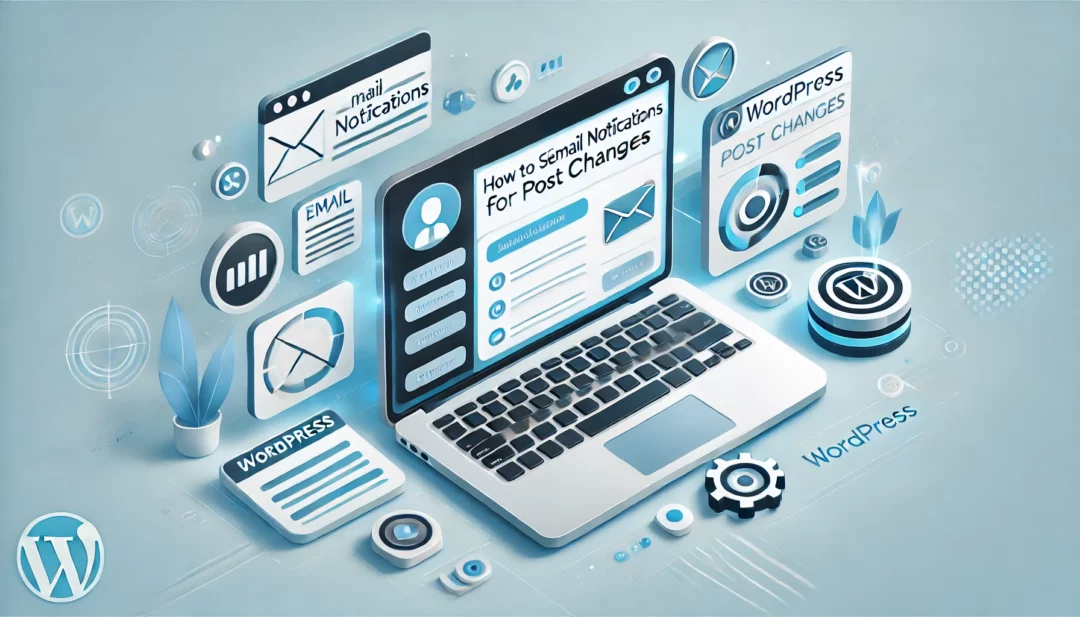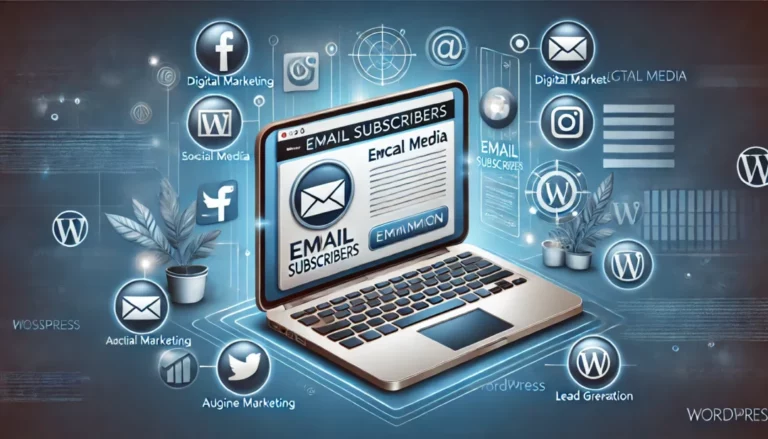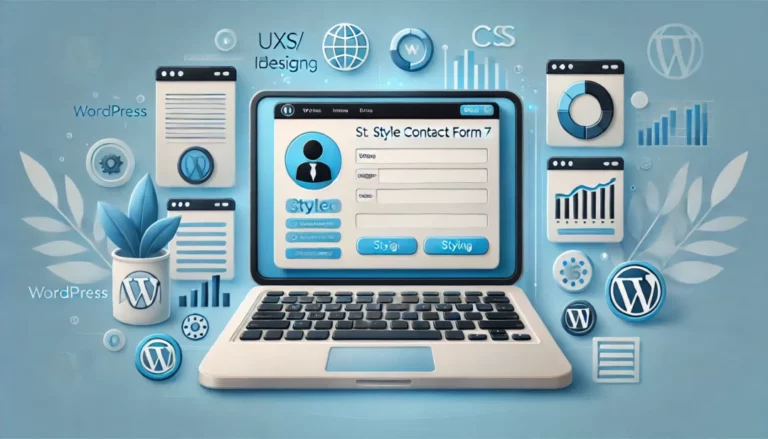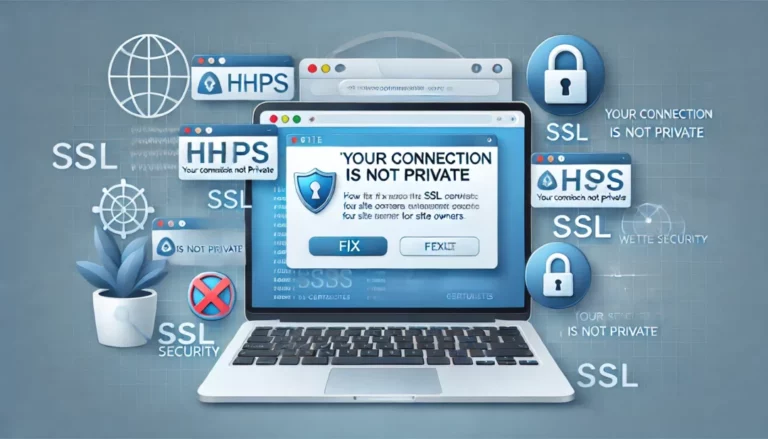
Keeping track of changes made to your WordPress posts can feel overwhelming, especially if you manage a team or a busy website. Setting up email notifications for post updates ensures you’re always in the loop without having to constantly monitor your site. It’s a simple yet effective way to stay organized and maintain control over your content.
Importance Of Email Notifications For Post Changes
Email notifications for post changes enhance efficiency and communication, especially in collaborative WordPress environments. They provide prompt alerts when posts are updated, ensuring you stay informed without manually checking for modifications.
- Improved Collaboration: Keeping your team updated on post changes prevents miscommunication. For instance, content editors and SEO specialists can quickly align their efforts when updated content is published.
- Faster Response Times: Notifications allow you to address unintended edits or errors immediately. If a post is altered without approval, you’re informed instantly, enabling swift corrections.
- Enhanced Workflow Management: Email alerts streamline workflows for multi-author websites. Team members can track changes in real-time, reducing redundant efforts and increasing productivity.
- Content Accuracy: Regular updates and revisions are vital for maintaining accurate content. By getting notified, you ensure changes align with your website’s objectives.
- Security Awareness: Sudden or unauthorized post modifications may indicate security issues. Instant notifications help you detect irregular activities and take early action.
Integrating email notifications into WordPress keeps you in control of your content, supports team coordination, and reduces administrative burdens.
Built-In WordPress Features For Notifications
WordPress includes basic notification features that offer limited functionality for tracking post updates. These native tools provide some level of control without relying on additional plugins.
Limitations Of Built-In Features
The built-in notification system lacks flexibility for detailed tracking. For example, email alerts are primarily triggered by large-scale activities like password resets or new user registrations. There are no direct options to receive notifications exclusively for post changes or edits.
Additionally, these features don’t support granular control over the types of changes prompting alerts, such as content updates, category adjustments, or tag modifications. They also fail to offer role-specific notifications, making it challenging for admins and authors to monitor activities effectively.
Using Plugins To Enable Email Notifications
Plugins provide an efficient way to enable email notifications for post changes in WordPress. With flexible features, they let you track updates and manage alerts based on your specific needs without needing custom development.
Recommended Plugins For Notifications
- WP Activity Log
Tracks content changes and sends real-time email alerts. Offers granular control over logged activities, including post updates, revisions, and metadata edits. Ideal for enhancing content management and site security.
- Simple History
Displays post changes in a user-friendly dashboard and integrates email notification features for edits. Lightweight and designed for those managing smaller teams or websites.
- Better Notifications for WP
Focuses on customizable email alerts for various activities, including content updates. Supports user roles and events, making it suitable for sites with multi-author environments.
- MainWP
Acts as a centralized management plugin to monitor WordPress sites. Provides detailed notifications for post changes and integrates with other tools for additional functionality.
- Post SMTP
Enhances the delivery of email notifications by ensuring proper SMTP configurations. While not specific to post updates, it’s a valuable plugin to ensure your WordPress email alerts function reliably.
- Select A Plugin
Visit the WordPress Plugin Repository or the chosen plugin’s official website. Search for a plugin compatible with your notification requirements, such as “Better Notifications for WP”.
- Install The Plugin
On your WordPress admin dashboard, navigate to Plugins > Add New. Enter the plugin’s name in the search bar, click Install Now, and activate it once the installation completes.
- Configure Plugin Settings
Explore the plugin settings under the new menu item usually added post-installation. For example, in “Better Notifications for WP”, go to Notifications and click Add New to set up custom email alerts.
- Customize Notifications
Choose the notification type, such as “Post Updated”, and specify the recipient role (e.g., Admin or Editor) to ensure relevant team members receive alerts. Define email subjects or templates for clarity.
- Test Email Notifications
Perform a test by making a post change or using the plugin’s testing tools if available. Verify recipients receive accurate, timely emails to ensure the setup functions correctly.
- Monitor And Adjust
Regularly review notification performance to avoid email overload or missed alerts. Adjust settings as your team’s workflows evolve to maintain efficiency.
Using plugins simplifies the process of configuring robust email notification systems in WordPress. By leveraging tools like WP Activity Log or Better Notifications for WP, you improve content monitoring, enhance collaboration, and maintain control over your website’s updates.
Custom Code Solutions For Advanced Users
Using custom code allows advanced users to implement tailored solutions for email notifications on WordPress post changes. This approach offers flexibility and control over functionality without relying on third-party plugins.
Benefits Of Custom Code
- Greater Customization: Customize notifications to fit your specific requirements, such as targeting changes to particular post types, taxonomies, or categories.
- Reduced Dependence on Plugins: Minimize plugin usage to reduce potential compatibility issues and improve site performance.
- Enhanced Security and Control: Understand and control your site’s code, reducing the risks associated with plugin vulnerabilities.
- Scalability: Modify or expand your custom code as your site’s needs grow without limitations imposed by plugin features.
Example Code Snippets
You can use PHP code to create email notifications for post modifications in your WordPress site. Insert the following code into your theme’s functions.php file or a custom plugin:
function notify_on_post_update( $post_ID, $post_after, $post_before ) {
// Check if post status is updated to 'publish'
if ( $post_after->post_status === 'publish' && $post_before->post_status === 'publish' ) {
// Set email details
$to = '[email protected]';
$subject = 'Post Updated: ' . $post_after->post_title;
$message = 'The post "' . $post_after->post_title . '" was updated. View it here: ' . get_permalink( $post_ID );
// Send email
wp_mail( $to, $subject, $message );
}
}
add_action( 'post_updated', 'notify_on_post_update', 10, 3 );
Steps for Implementation:
- Choose the Placement: Place the code in a child theme’s
functions.phpfile or a custom plugin to avoid losing changes during updates. - Edit Email Parameters: Update the
$tovariable with the recipient email. Customize the$subjectand$messagevariables if needed. - Test Functionality: After adding the code, update a published post to ensure you receive the notification email.
Common Pitfalls to Avoid:
- Testing on a live site before verifying the code in a staging environment can disrupt functionality.
- Using outdated PHP syntax may cause errors on servers with strict configurations.
- Forgetting backups before editing the
functions.phpfile may result in site issues.
- Add conditional checks for specific user roles (e.g., editors or authors).
- Include metadata or custom fields in email content.
- Integrate with external APIs for enhanced notification features.
By applying and modifying this code, you’ll gain more control over post notifications, enabling precise management tailored to your WordPress site’s requirements.
Best Practices For Managing Notifications
Efficient notification management ensures you’re informed about essential updates without being overwhelmed. Following practical strategies enhances collaboration and keeps your WordPress environment running smoothly.
Avoiding Notification Overload
Configure selective criteria to avoid unnecessary email notifications. Limit alerts to critical events, such as post modifications, category changes, or user activity that impacts your workflow. Unchecked notifications can reduce productivity.
Use role-specific settings to tailor notifications for admins, authors, or contributors. For example, admins might need alerts about all content edits, whereas contributors could receive updates only for assigned posts. Plugins like Better Notifications for WP or WP Activity Log support these granular settings.
Consolidate messages by enabling digest-style notifications if supported. Instead of receiving multiple individual emails, a single summary email may provide all updates over a set period, improving clarity and reducing distractions.
Ensuring Deliverability Of Emails
Set up a reliable SMTP service to ensure all email notifications reach recipients promptly. Default WordPress email settings don’t guarantee delivery, especially when server configurations block notifications.
Integrate plugins like Post SMTP or WP Mail SMTP with external email providers like Gmail, SendGrid, or Mailgun. These services enhance deliverability by using authenticated SMTP protocols.
Test email notifications after setup. Send sample emails using plugin tools or WordPress notification logs to confirm correct functionality. Double-check spam folder settings if emails aren’t appearing in your inbox.
Keep contact details updated to prevent email bounce issues. Verify that users, especially team members relying on notifications, have entered valid and current email addresses in their profiles.
Conclusion
Setting up email notifications for post changes in WordPress is a game-changer for managing your site effectively. Whether you choose plugins or custom code, these tools give you the control and flexibility needed to stay on top of updates.
By taking advantage of tailored notifications and best practices, you can streamline workflows, enhance team collaboration, and maintain content accuracy without unnecessary stress. Implementing these solutions ensures you’re always informed and in control of your WordPress site.
Frequently Asked Questions
What are the benefits of setting up email notifications for WordPress post updates?
Email notifications ensure you stay informed about content changes, enhance collaboration, prevent unauthorized edits, and streamline workflow management. They enable faster response times, improve efficiency, and support better team communication for multi-author websites.
Why are WordPress’s built-in notification features insufficient for post update tracking?
WordPress’s native features lack flexibility for tracking specific post changes. They do not offer role-specific alerts, detailed change tracking, or granular customization, making it challenging for admins to monitor content updates effectively.
What plugins can be used to enable post update email notifications on WordPress?
Popular plugins include WP Activity Log, Simple History, Better Notifications for WP, MainWP, and Post SMTP. These tools provide customizable features for tracking updates and managing email alerts according to your needs.
How can plugins improve the WordPress notification system?
Plugins allow granular control over notifications, enabling you to track specific changes, set role-based alerts, and customize email notifications for better content monitoring and team coordination.
Can custom code enable email notifications on WordPress post changes?
Yes, custom code provides a flexible solution for tailored email notifications. Using PHP code snippets, you can create targeted alerts for specific post types or events, reducing reliance on plugins and enabling advanced customization.
What are the best practices for managing email notifications in WordPress?
To avoid alert fatigue, set selective criteria for notifications, use role-based settings, and consolidate alerts into digest formats. Ensure email deliverability with a reliable SMTP service and regularly test notifications.
How do I ensure email notifications are delivered reliably?
Use a reliable SMTP service, integrate with external email providers, and confirm email functionality through testing. Keep contact information updated to avoid bounce issues and ensure messages are received consistently.
Are there any risks with enabling too many email notifications?
Yes, excessive notifications can lead to cluttered inboxes and missed critical updates. Configure notifications selectively to focus only on essential events, helping you stay organized and avoid unnecessary distractions.
What is the advantage of integrating email plugins with external APIs?
Integrating plugins with external APIs enhances scalability and functionality. It allows for advanced features like sending notifications through third-party services, ensuring better deliverability and managing messages more effectively.
How can role-specific settings improve notifications?
Role-specific settings allow you to tailor notifications based on user roles, ensuring that team members receive updates relevant to their tasks. This enhances collaboration and prevents unnecessary alerts for unrelated changes.






